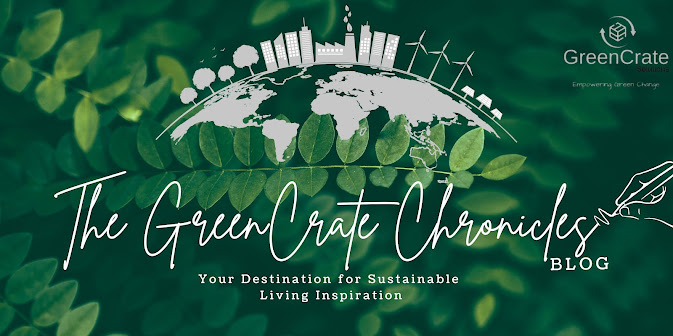The Forgotten Frontline: How Climate Change Inequality Threatens the Poorest Nations
Introduction
Climate change is no longer a distant threat; it is a lived reality for millions. Yet, its impacts are not distributed equally. While wealthier nations possess the resources to adapt and mitigate the effects, poorer nations—those least responsible for global emissions—bear the brunt of the crisis. Rising sea levels, extreme weather events and prolonged droughts disproportionately affect these vulnerable regions, exacerbating existing inequalities and pushing millions into poverty.
This article critically examines the systemic failures of global climate policies, the inaction of powerful nations and the dire consequences for developing countries. We ask the questions many avoid: Will meaningful action ever happen? Who will benefit from global climate initiatives? And most importantly, will the poorest nations receive the support they desperately need?
Section 1: Understanding Climate Inequality
What is Climate Inequality?
Climate inequality refers to the uneven distribution of climate change impacts, where developing nations face disproportionate risks despite contributing the least to global emissions. For instance, Africa accounts for less than 4% of global greenhouse gas emissions but experiences some of the most severe consequences, including desertification, water scarcity and displacement.
Key Drivers of Climate Vulnerability
Geographic Factors: Many poorer nations are located in regions highly susceptible to climate impacts, such as the tropics and coastal areas.
Economic Dependence on Agriculture: Agriculture constitutes a significant portion of GDP in developing countries. Climate-induced crop failures directly threaten food security and livelihoods.
Weak Infrastructure: Limited access to resilient infrastructure exacerbates the impact of extreme weather events.
Political Instability: Poor governance and lack of international influence hinder effective climate adaptation strategies.
Sources:
Section 2: The Reality on the Ground
Case Studies
Bangladesh: With 700 rivers and a low-lying delta, Bangladesh is among the most vulnerable to rising sea levels. Over 20 million people are at risk of displacement by 2050.
Sub-Saharan Africa: Persistent droughts have led to severe food shortages, with millions facing starvation.
Small Island Developing States (SIDS): Nations like Tuvalu and the Maldives face existential threats, with rising seas threatening to submerge entire countries.
Impact on Livelihoods
Agriculture: Unpredictable rainfall patterns have reduced crop yields by up to 30% in some regions.
Health: The rise in vector-borne diseases, such as malaria and dengue, is directly linked to changing climate conditions.
Migration: The UN estimates that climate change could create over 200 million climate refugees by 2050.
Sources:
Section 3: The Role of Developed Nations
Historical Responsibility
Developed nations have been the primary contributors to global emissions since the Industrial Revolution. Yet, their efforts to address climate change have often fallen short of meaningful action. The Paris Agreement’s goal of limiting global warming to 1.5°C remains out of reach, largely due to inadequate commitments from high-emission countries like the United States, China and the EU.
Failure to Meet Climate Finance Goals
At COP21, developed nations pledged $100 billion annually to help poorer countries adapt to climate change. However, less than 70% of this target has been met and much of the funding comes in the form of loans rather than grants, further indebting vulnerable nations.
Exporting Environmental Costs
Wealthier nations often outsource pollution-intensive industries to developing countries, effectively transferring environmental degradation without reducing global emissions.
Sources:
Section 4: The Broken Promises of Global Climate Summits
COP Meetings: A History of Inaction
Since its inception, the Conference of the Parties (COP) has been criticized for prioritizing corporate interests over genuine climate action. COP26 in Glasgow, for instance, saw major fossil fuel companies sponsoring the event, raising questions about conflicts of interest.
Adaptation Funds: Too Little, Too Late
The Green Climate Fund, established to support adaptation in vulnerable nations, has disbursed only a fraction of its promised funds. Bureaucratic hurdles and stringent conditions make access nearly impossible for many countries.
The Role of INC-5
The INC-5 meeting in Busan aimed to finalize a global treaty on plastic pollution. While progress was made, critics argue that the treaty’s enforcement mechanisms remain weak and its impact on poorer nations—who often bear the waste burden—is unclear.
Sources:
Section 5: Who Benefits from the Current System?
Corporate Interests
Multinational corporations often exploit loopholes in climate agreements to continue harmful practices. For example, carbon offset schemes have been criticized for enabling companies to claim climate action without reducing actual emissions.
Geopolitical Power Dynamics
Developed nations use climate finance as a tool for political leverage, dictating terms that often benefit their own economies rather than addressing the needs of vulnerable nations.
Sources:
Section 6: The Way Forward
Redefining Climate Justice
Equity must be at the heart of global climate policies. This includes acknowledging historical emissions and providing reparative justice to affected nations.
Empowering Vulnerable Nations
Direct Funding: Establishing mechanisms that bypass bureaucratic delays.
Technology Transfer: Sharing clean energy technologies without profit motives.
Capacity Building: Investing in local expertise to develop sustainable solutions.
Global Solidarity
Civil society and grassroots movements play a crucial role in holding governments and corporations accountable. Public pressure has led to significant victories, such as the divestment movement against fossil fuels.
Sources:
Conclusion
The climate crisis is a stark reminder of global inequality. While the wealthiest nations have the resources to shield themselves, the poorest are left to face the consequences of a problem they did not create. It is time for the global community to move beyond empty promises and take decisive action to address climate injustice. The future of millions depends on it.

.png)
%20(1).png)
%20(1).png)
Comments
Post a Comment